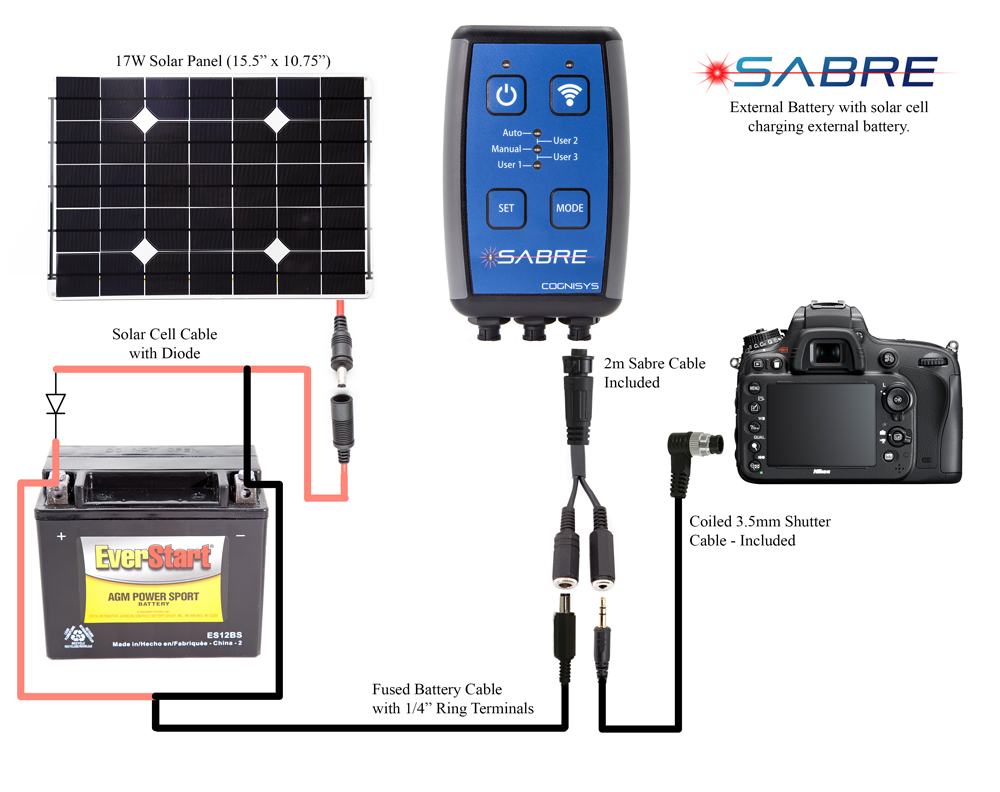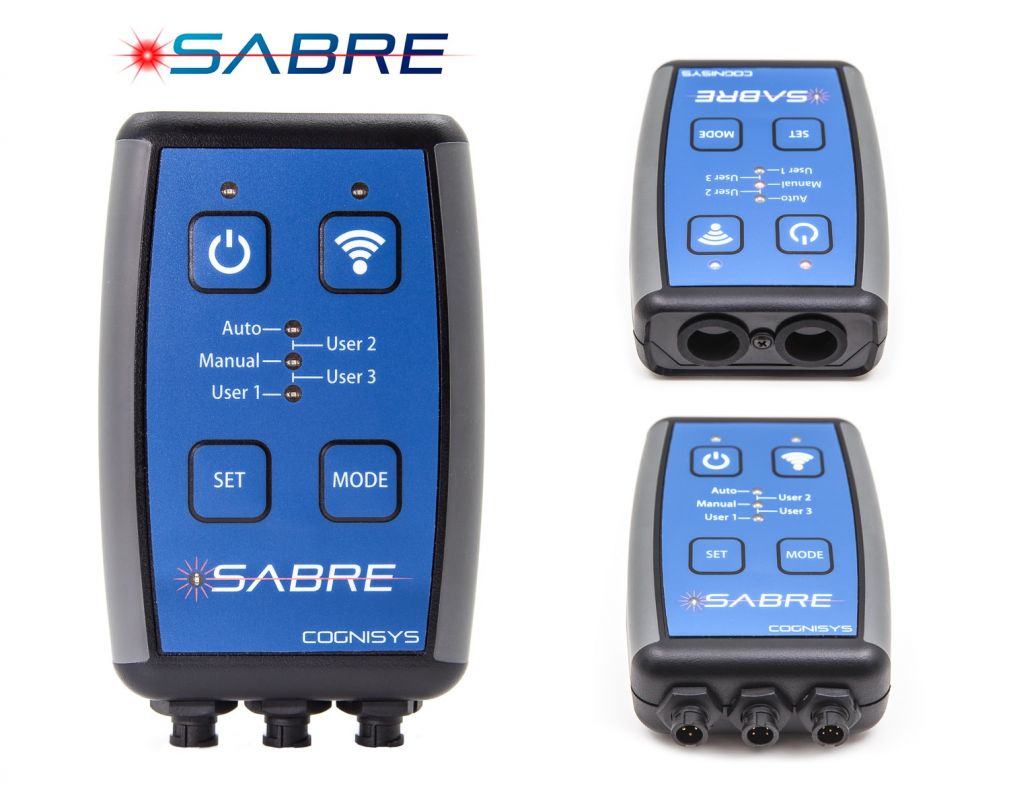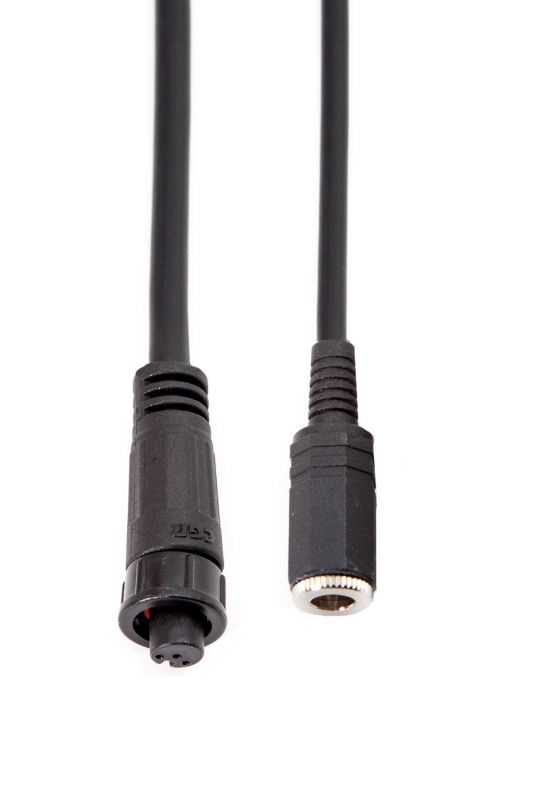Sabre Battery Life and External Power
Sabre and Battery Life
Some Notes on the Internal Li-Ion Battery
The internal battery used in Sabre is a dual cell Li-Ion Battery pack, the battery pack is 7.4V and 2600mAHr. It contains two 18650 Li-Ion Cells. A typical Li-Ion battery is good for 300 to 500 charge discharge cycles, assuming the worst case when the battery is fully discharged for each cycle. However, if you only drain the battery to 50% of capacity the number of cycles goes up dramatically to 1,200 to 1,500. The battery life will also be greatly improved if the battery is not stored empty (or even close to empty). The Sabre has internal circuitry to prevent over discharge and over charge. If the battery does become exhausted, you will need to use external power or return the Sabre to us for a new battery install.
Battery life default sampling rate - 22hrs
Default sample rate (10mS), LED Brightness set to 1, Wi-Fi: OFF
Battery life - 1/2 second sample rate - 49hrs*
Sample rate - 500mS, LED Brightness set to 1, Wi-Fi: OFF
Battery life - 1 second sample rate - 71hrs*
Sample rate - 1000mS, LED Brightness set to 1, Wi-Fi: OFF
* - Firmware Version 1.0.01 or later required.
Sabre works by sending out a very short pulse of light and waiting for the return signal - from this time measurement it can determine how far away the object is that caused the reflection. Sabre can send out 100 pulses per second or one pulse every 10 mS (10/1000 of a second). We can control the rate at which these pulses are sent out - this number is called the sample rate. The less often the Sabre takes a measurement the less current it uses from the battery. Thus the slower sample rate gives a considerable increase in battery life. If you are trying to capture a bird in flight you will want the fastest sample rate to make certain you are able to capture him. For mammals however this is much faster than is required. When trying to capture a larger critter you can get away with a much slower sample rate like 500mS or even 1 second.
Many applications require that Sabre be out in the field for long durations, to do this we need to connect an external battery to Sabre. Sabre has an operating voltage range of 12 to 28VDC. This allows us to use a wide range of batteries that have an output voltage anywhere between 12 and 24VDC. This includes Li-Ion, Sealed Lead Acid, automotive or, motorcycle batteries. The external battery is connected to the same 2.1 mm power jack that is used for charging the battery with the AC adapter. An image of the wiring is shown below. We offer a fused battery cable for making this connection if needed. The battery cable comes with either 0.187 in. Faston spade connectors for use with smaller sealed lead acid (SLA) batteries or 1/4 in ring terminals as shown in the image below.
Battery life using External Lead Acid Battery
Battery life using 10 AHr AGM 12VDC Battery - 176 Hrs (7.3 days)
Default sample rate (10mS), LED Brightness set to 1, Wi-Fi: OFF
Battery life using External Li-Ion Battery
Battery life using 14.4V 5200mAHr Li-Ion Battery - 104 Hrs (4.3 days)
Default sample rate (10mS), LED Brightness set to 0, Wi-Fi: OFF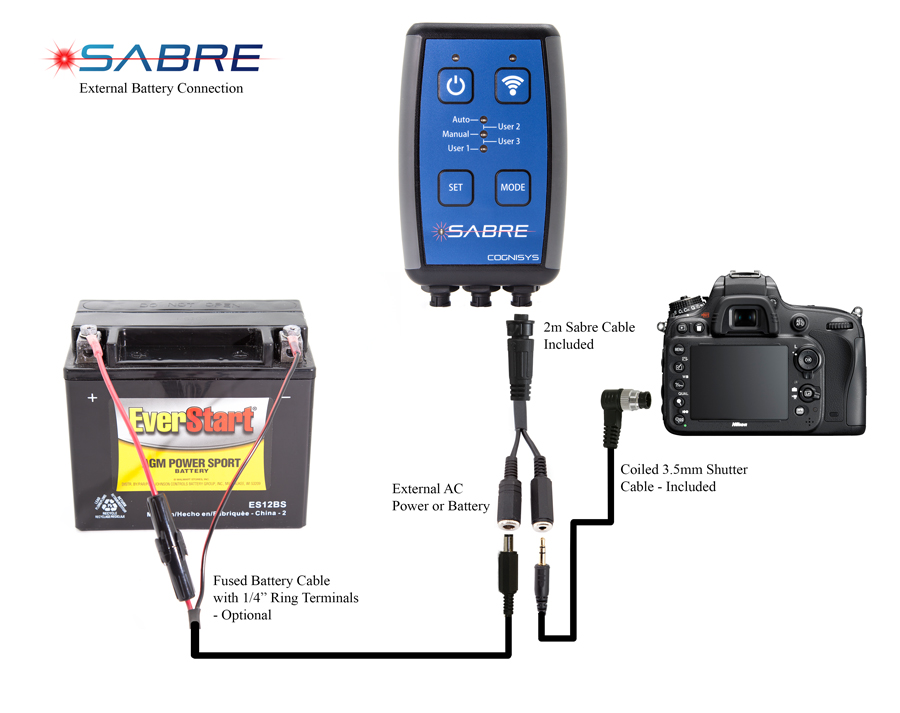
There are many different sizes and types of Lead Acid Batteries to choose from. Due to there lower maintenance and easier transport we will keep our discussion to Sealed Lead Acid (SLA) batteries also known as valve regulated lead acid batteries (VRLA). A deep cycle battery is preferred over a starter battery due to its capability to deliver a larger percentage of it's charge without degradation. An AGM (absorbent glass mat) battery is preferable over a gel type battery as AGM batteries have a much more forgiving charging curve. Gel batteries are easily damaged without using the proper chargers, this is especially applicable if you plan to use the battery in conjunction with a solar panel.
In the configuration below, the solar cell will only charge the internal battery. The external battery will provide auxiliary power to Sabre but will not be charged by the solar cell. The external battery is not required when using the solar cell unless long periods of no sun are expected in which case the external battery will keep Sabre alive during longer dark periods. In this configuration the 17W solar cell shown will charge the battery in about one and a half hours with full sun. You can find a compatible solar panel for Sabre at Voltaic Solutions.
Charging the internal battery with a solar cell
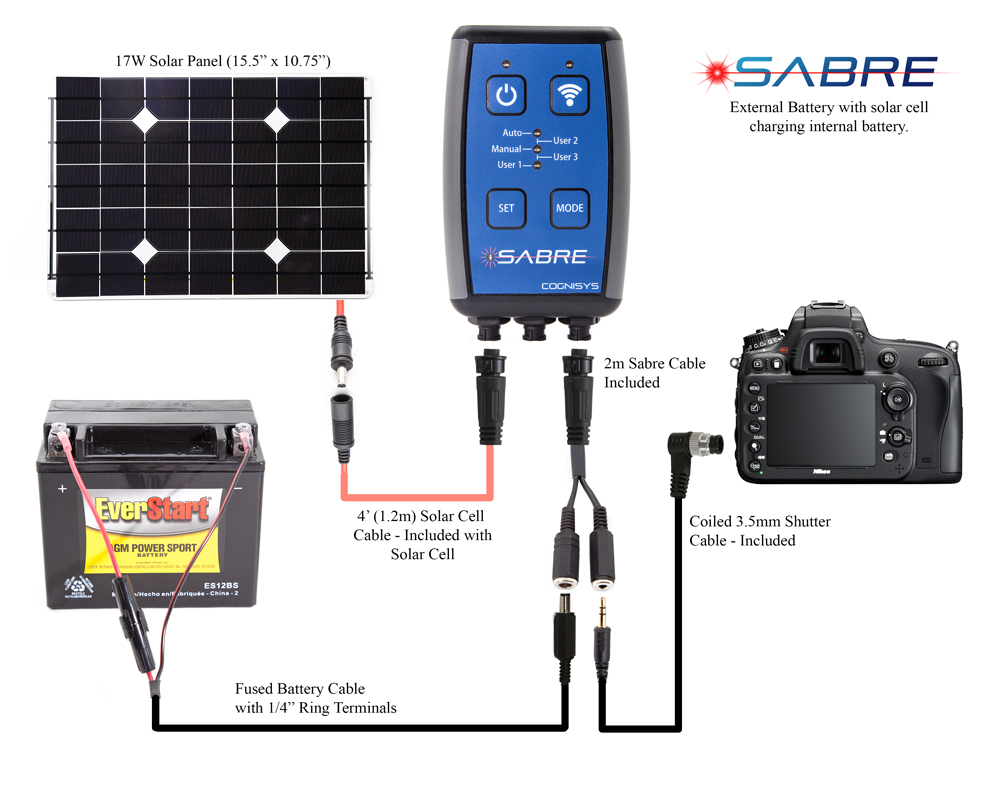
Additional Considerations for Solar Charging
Sabre has internal circuitry to handle a solar cell input and keep the internal battery charged. All of the wiring diagrams on this page are using a 17W solar cell. When it is in full sun and connected to the Sabre it will charge the battery in about an hour and a half. If however you want to use the solar cell to charge your external battery there are some additional considerations. In this scenario you would need to connect the solar panel, external battery and Sabre all in parallel. There will need to be a diode between the solar panel and the external battery to prevent the current from the battery back feeding into the solar cell during dark periods. Even better than a diode would be a charge controller - this is an electronic module to regulate the power from the solar cell and keep the voltage and current limits within range of the battery. A charge controller will prolong the life of whatever battery you choose to use. If you are using the 17W panel we offer as your solar cell you will want to use a charge controller if your battery is less than around 14 AHrs. If you are seeing a voltage greater than 14.7VDC on your 12V battery you will probably want to consider a charge controller. It is possible to get away with no charge controller if you are using a large battery. A charge controller is always best but not always required. The connection diagram for using a solar cell to charge the external battery is shown below.
Charging the External Battery with a Solar Cell
